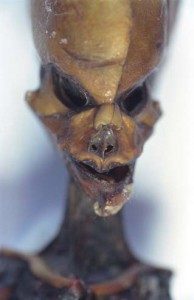 Bigfoot, Sasquatch, Yowi, Skunk Ape, Wood Ape…these are just some of the names of North America’s most famed and mysterious cryptid. Millions of people hold a belief in Bigfoot and there are countless amateur researchers looking for a way to prove the creature exists. From nightly excursions into the wild, hoping for a fleeting glimpse of Sasquatch (or Squatch as he is now commonly known), to the scrutinizing of video footage and photographs, to analysing potential sources of Bigfoot DNA, much is being done to legitimize the pursuit of evidence for Sasquatch.
Bigfoot, Sasquatch, Yowi, Skunk Ape, Wood Ape…these are just some of the names of North America’s most famed and mysterious cryptid. Millions of people hold a belief in Bigfoot and there are countless amateur researchers looking for a way to prove the creature exists. From nightly excursions into the wild, hoping for a fleeting glimpse of Sasquatch (or Squatch as he is now commonly known), to the scrutinizing of video footage and photographs, to analysing potential sources of Bigfoot DNA, much is being done to legitimize the pursuit of evidence for Sasquatch.
In amongst all the speculation that surrounds the legend of Bigfoot, there are many hypotheses in circulation that attempt to explain what Bigfoot or Sasquatch might actually be. This doesn’t speak to the potential of its existence, but simply expounds on the origin of the legend. What follows is a brief examination of the most popular theories, presented in two categories: Biological and Supernatural.
Biological:
 Gigantopithecus – Perhaps the most popular hypothesis for the origin of Bigfoot, if not the most plausible, is that the creature is a surviving example of the Palaeolithic great ape known as Gigantopithecus. This giant ape existed between 9 million to 100,000 years ago, fossils of which have been found in China, India and Vietnam. Some researchers believe that Gigantopithecus’ territory covered much of Asia and even Western Europe, but all agree that it was the largest ape ever to have lived. This big fella topped out at 9-10 feet tall and weighed up to 1200lbs.
Gigantopithecus – Perhaps the most popular hypothesis for the origin of Bigfoot, if not the most plausible, is that the creature is a surviving example of the Palaeolithic great ape known as Gigantopithecus. This giant ape existed between 9 million to 100,000 years ago, fossils of which have been found in China, India and Vietnam. Some researchers believe that Gigantopithecus’ territory covered much of Asia and even Western Europe, but all agree that it was the largest ape ever to have lived. This big fella topped out at 9-10 feet tall and weighed up to 1200lbs.
Many Squatchers believe that Gigantopithecus survived extinction and evolved into what we now know as Bigfoot.
Lemurian Origins – A relatively new hypothesis, one made famous by the alleged Bigfoot DNA genome project conducted by Dr. Melba S. Ketchum published in 2013. Ketchum has claimed that Bigfoot’s mitochondrial DNA is that of an unknown species of lemur. Some researchers have adopted this idea and believe that Sasquatch is in fact the product of hominin / lemur cross breeding from approximately 15,000 years ago. This hypothesis is reported to be  highly specious and is not widely accepted.
highly specious and is not widely accepted.
Neanderthal – Much like the Gigantopithecus hypothesis, the Neanderthal hypothesis posits simply, that Bigfoot is a surviving population of Neanderthals who have evolved to posses the characteristics of the modern Bigfoot legend.
Feral Human – The feral human hypothesis suggests that the Bigfoot legend may in fact be the misidentified collection of human individuals that have retreated from human civilization and literally become wild men. This doesn’t say that we’re seeing a cohesive population of wild men, but rather that sightings show disparate individuals which presents an illusory pattern that is in turn interpreted as a population.
Shaman Hypothesis – This is the suggestion that sightings of Bigfoot are the result of first nations’ shamans in the wild. Some Native American people still participate in the practice of sending out young shaman candidates to live in the wild, subsisting on the land, wearing skins and growing long hair as a ritual right of passage. While there are several tribes or communities in both the U.S. and Canada that do participate in these types of rituals, the idea that men somehow become giant hairy ape like creatures through this process is questioned loudly.
Supernatural:
 Alien – At one time the Bigfoot Alien Hypothesis was the most popular explanation for the existence of the creature. Many Bigfoot sightings coincide with or are accompanied by UFO sightings and as a result many people are sure that the creature is in fact an extra-terrestrial. This theory is split down the middle with one camp believing that Bigfoot is an intermittent visitor; that it doesn’t actually live in the wilds of North America and is just visiting. The other camp believes that Bigfoot, while alien, is perhaps stranded and is breeding and growing a population base in the forest.
Alien – At one time the Bigfoot Alien Hypothesis was the most popular explanation for the existence of the creature. Many Bigfoot sightings coincide with or are accompanied by UFO sightings and as a result many people are sure that the creature is in fact an extra-terrestrial. This theory is split down the middle with one camp believing that Bigfoot is an intermittent visitor; that it doesn’t actually live in the wilds of North America and is just visiting. The other camp believes that Bigfoot, while alien, is perhaps stranded and is breeding and growing a population base in the forest.
Inter-dimensional Being – As the heading suggests, this is the idea that Sasquatch is actually the manifestation of an inter-dimensional being, popping in and out of our realm, leaving little tid-bits of evidence here and there. This hypothesis would account for the fleeting nature of Bigfoot sightings and would quell the sceptics claim that there isn’t enough wild territory in North America to support a breeding population of real beings.
Spirit – In this case Bigfoot isn’t considered to be a ghost, but rather a spirit, akin to Native American stories of gods, demons and other spirit type entities. In this same vein, some people believe Sasquatch to be an angel or similar angelic presence, citing the sometimes reported psychic abilities of the creature as evidence that it is more ethereal than physical.
This, while not an exhaustive list, includes the most prevalent hypotheses for the identity of Sasquatch. No doubt there are other theories, some more plausible than others, but the wonderful thing about studying cryptozoology is that there’s always someone to disagree with.
Know of another Bigfoot hypothesis? Want to discredit one of the hypothesis listed…say so in the comment section below.

 Billions and billions, that’s what Carl Sagan was quoted as saying when he was asked how many stars there might be in the universe. He didn’t actually say billions and billions, but Johnny Carson latched onto that sound byte and it became one of his most iconic comedic expressions.
Billions and billions, that’s what Carl Sagan was quoted as saying when he was asked how many stars there might be in the universe. He didn’t actually say billions and billions, but Johnny Carson latched onto that sound byte and it became one of his most iconic comedic expressions. Now ponder if you will the likelihood that life has found a way to pop into existence on any of those planets (other than Earth). It’s a mind-boggling notion for sure.
Now ponder if you will the likelihood that life has found a way to pop into existence on any of those planets (other than Earth). It’s a mind-boggling notion for sure.

 Hot off the presses, Dr. Greer announces the release of his preliminary report on the analysis of the Atacama Humanoid!
Hot off the presses, Dr. Greer announces the release of his preliminary report on the analysis of the Atacama Humanoid! Photos of the figure are included in the report along with comparisons to fetal skeletal structures and the like. Looking at the photos, which have been available online for some time, one is struck by the look of the creature. It appears almost sculpted, which brings up some doubt that it isn’t an elaborate hoax.
Photos of the figure are included in the report along with comparisons to fetal skeletal structures and the like. Looking at the photos, which have been available online for some time, one is struck by the look of the creature. It appears almost sculpted, which brings up some doubt that it isn’t an elaborate hoax. lending some small measure of credibility to the story, but as Nolan points out late in the report, these are preliminary findings that have yet to be confirmed through peer review, which will reportedly take place in roughly a year.
lending some small measure of credibility to the story, but as Nolan points out late in the report, these are preliminary findings that have yet to be confirmed through peer review, which will reportedly take place in roughly a year.
 The second law of thermodynamics demands, and it is generally accepted, that life tends toward greater and greater complexity. That is to say that as biological entities evolve, they generally tend to develop into more complex entities. The second law of thermodynamics says that entropy increases over time, which means that over time, all systems will evolve toward more and more disorder (or complexity).
The second law of thermodynamics demands, and it is generally accepted, that life tends toward greater and greater complexity. That is to say that as biological entities evolve, they generally tend to develop into more complex entities. The second law of thermodynamics says that entropy increases over time, which means that over time, all systems will evolve toward more and more disorder (or complexity).

 Of the silly Fortean beliefs held by people of the late 19th and early 20th century, some are more understandable than others. When an idea infects the populous it can spread as quickly as a scientifically engineered super-virus, and when those ideas are backed by the likes of intellectual giants such as Sir Arthur Conan Doyle, it’s easy to forgive the people for buying into it.
Of the silly Fortean beliefs held by people of the late 19th and early 20th century, some are more understandable than others. When an idea infects the populous it can spread as quickly as a scientifically engineered super-virus, and when those ideas are backed by the likes of intellectual giants such as Sir Arthur Conan Doyle, it’s easy to forgive the people for buying into it.















 Of course, there are several plant species that are known for their aggressive predatory adaptations, such as the Pitcher Plant and the Venus Fly Trap, but mainstream science tends to ignore these examples of plants that actively interact with their environment. What if all plants are ultimately capable of affecting their environment in more subtle and potentially dangerous ways?
Of course, there are several plant species that are known for their aggressive predatory adaptations, such as the Pitcher Plant and the Venus Fly Trap, but mainstream science tends to ignore these examples of plants that actively interact with their environment. What if all plants are ultimately capable of affecting their environment in more subtle and potentially dangerous ways?

